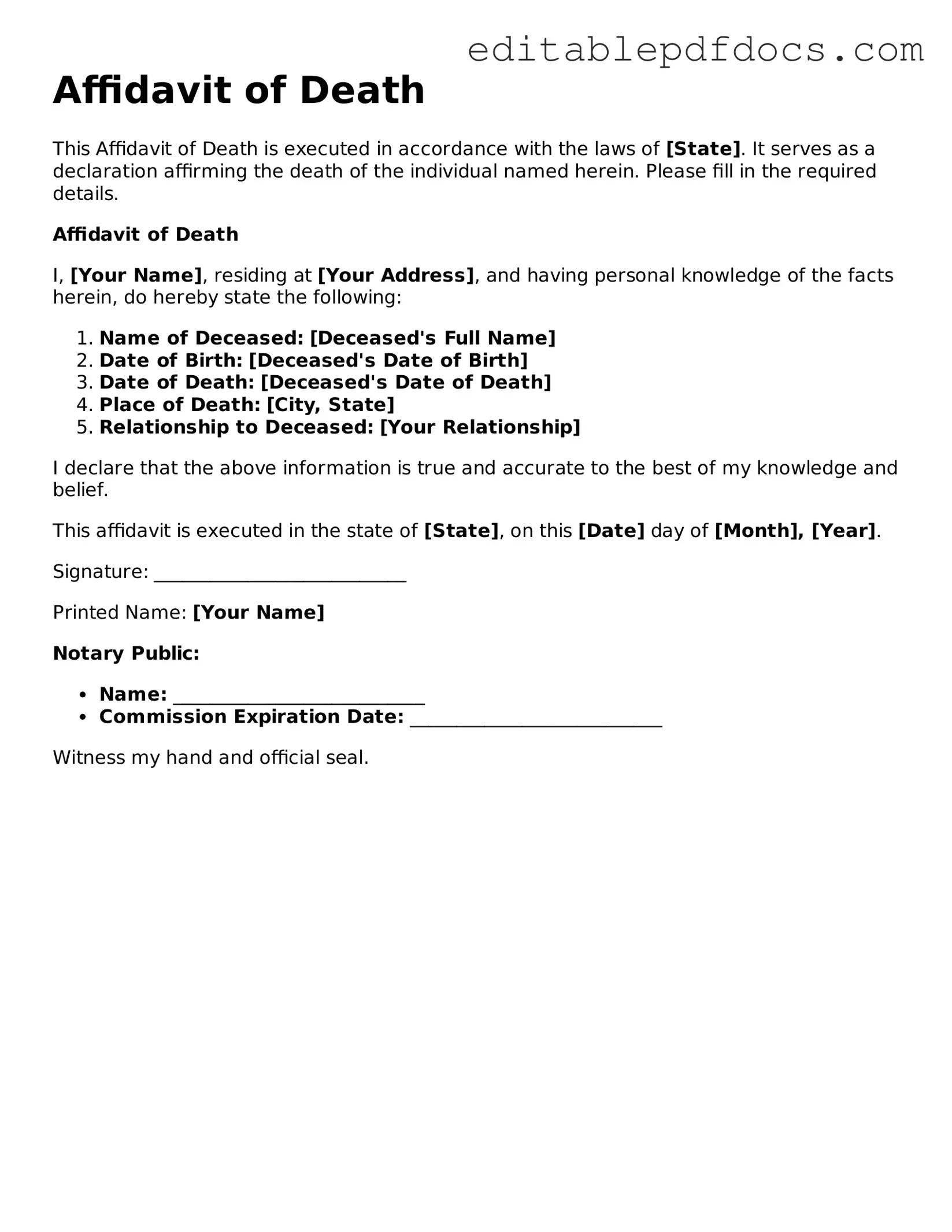Completing the Affidavit of Death form can be straightforward, yet many individuals encounter common pitfalls that can lead to delays or complications. One frequent mistake is failing to provide accurate information about the deceased. It’s crucial to ensure that the name, date of birth, and date of death are correct. Any discrepancies can cause confusion and may require additional documentation.
Another common error involves the signature. The form must be signed by the appropriate individual, often the person who is most closely related to the deceased. Sometimes, people mistakenly think that anyone can sign. This misunderstanding can invalidate the affidavit, leading to further complications.
Many individuals overlook the requirement for witnesses. Depending on state laws, the affidavit may need to be signed in the presence of one or more witnesses. Neglecting this step can result in the form being rejected, necessitating a new submission.
Additionally, some people fail to include necessary supporting documents. The affidavit may require attachments, such as a death certificate or other relevant paperwork. Omitting these documents can delay the processing of the affidavit.
Inaccurate dates can also cause issues. Filling in the date of signing incorrectly or using the wrong date format can lead to confusion. It is essential to double-check these details to avoid unnecessary complications.
Another mistake occurs when individuals do not read the instructions thoroughly. Each jurisdiction may have specific requirements for the affidavit. Not adhering to these guidelines can result in rejection of the form.
Moreover, individuals sometimes forget to make copies of the completed affidavit. Having a copy is important for personal records and may be necessary for future legal processes. Without it, tracking the status of the affidavit can become challenging.
Finally, some people submit the affidavit without understanding the implications. It is vital to comprehend what signing the affidavit entails, as it may have legal consequences. Consulting with a knowledgeable person can help clarify any uncertainties.
